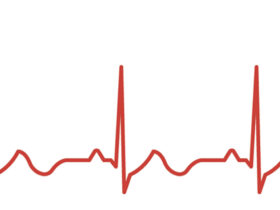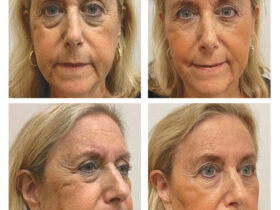By Andrea Hayes, MD, F.A.C.E.
The most common cause of death in patients with diabetes, is NOT diabetes itself, but cardiovascular disease (commonly called heart disease or CV disease). Patients with diabetes are twice as likely to die of heart attack and stroke as their non-diabetic counterparts and frequently develop disease at a much younger age. Heart disease refers to the fatty build-up of cholesterol (plaque) in the large arteries that supply blood to the heart, brain and extremities. When the artery becomes clogged, the organ loses sufficient blood flow for normal functioning.
Type 2 diabetes is considered a “cardiovascular disease equivalent” meaning that a person with diabetes has the same chance of having a heart attack as a person who has already suffered from a cardiovascular event. During my 25 years of practice in Endocrinology and Diabetes, I’ve treated thousands of patients with Type 2 diabetes who were at very high risk of heart disease or who were already diagnosed with the condition. My goal at each visit is to focus not only on blood sugar control but on all known factors contributing to overall cardiovascular risk.
Here are the most important modifiable risk factors that can reduce your risk of developing heart disease:
1. LDL cholesterol: The most important number to know, whether you have diabetes or not, is the “bad cholesterol” or LDL (low density lipoprotein). This level has been shown to be more tightly correlated with heart disease risk than blood pressure, A1C and even smoking. Most labs report a normal LDL as being less than 100 mg/dl. National guidelines suggest that patients with diabetes should maintain an LDL less than 70 mg/dl; for those with known heart disease, the LDL should likely be targeted at below 55 mg/dl.
In other words, a “normal” LDL is just not good enough if you have diabetes. Lower than normal is better. The HDL (high density lipoprotein) or “good cholesterol” is an important number as well. In general, the higher the HDL the more protected one is for CV risk. However, it is more difficult to change the HDL than the LDL because genetics and gender play an important role in determining this number. High triglycerides are another component of total cholesterol that should be addressed.
2. Blood Pressure: Blood pressure is a very important parameter to control in patients with diabetes in order to reduce CV risk. When blood pressure is high, it places stress on the arteries making them more fragile and subject to blockage or rupture. Blood pressure should generally measure less than 120 -125/80 for optimal protection. Some patients may require three or more medications in combination for the purpose of keeping blood pressure within normal range. Proper control of hypertension helps prevent stroke, heart and kidney disease making this measurement very high on the list of risk factor modification targets.
3. A1C: The A1C test reflects the 90 day blood sugar average in a patient with diabetes. This level reflects the amount of sugar attached to the red blood cell which typically lives 90 days. I call this the “diabetes report card” because it takes into account the average blood sugar over the preceding three months; it does not however take into account glucose excursions including high and low values that may occur daily. Blood sugar control is known to be an important risk factor in microvascular disease modification particularly relating to small blood vessel disease of the retina, kidneys and nerves.
4. Smoking. If you don’t smoke, great. If you do, it’s time to quit. The chemicals in cigarette smoke lead to a toxic milieu in the vasculature promoting deposition of plaque and ultimately, unhealthy arteries.
5. Obesity, dietary composition and physical activity. These factors can’t be overstated as important in the primary and secondary prevention of heart disease in both the diabetic and non-diabetic populations. Generally, there is no need to implement a fancy, restrictive diet or to start training for a marathon. Small, daily, sustainable changes add up to big changes in the long run. For example, if you are sedentary, start small by walking more frequently, taking the stairs instead of the elevator and park farther away from your destination. Change your diet by first eliminating regular sodas or sugared drinks which contain “empty calories”. Ask your physician about medications that can promote weight loss.
Cardiovascular disease is the leading cause of death in our nation, ahead of cancer, COVID-19, dementia and others. People with diabetes and those at risk for heart disease should address their risk factors in order to prevent devastating consequences.
Andrea Hayes MD received her Type 1 diagnosis at age 15. She is a board-certified endocrinologist who has been in practice for 25 years. She offers prompt appointments for patients in home, local office or via telehealth.
For more information, call 239-641-8199 or visit: naplesdiabetesconcierge.com









